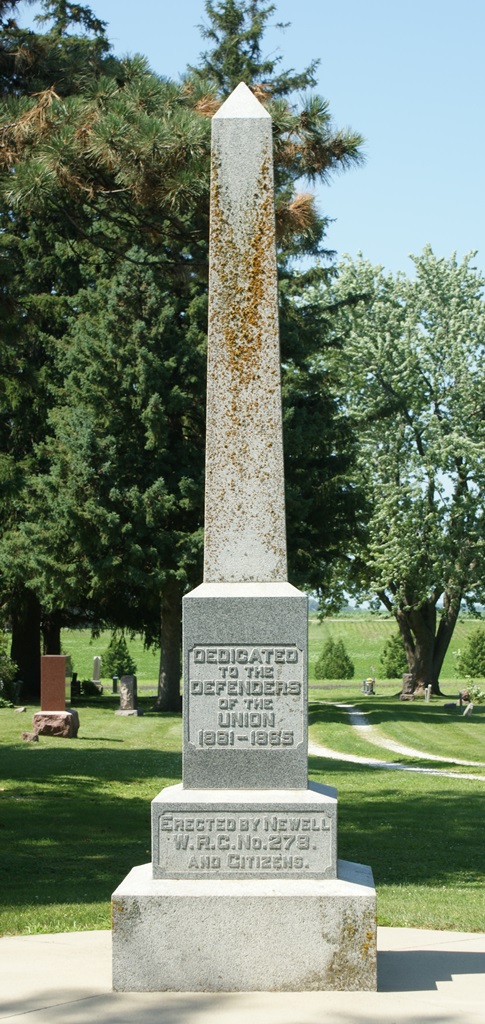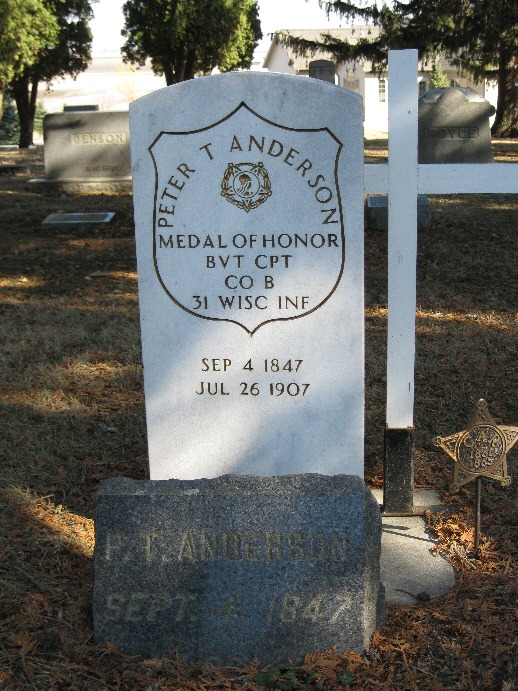KNOW HERE: Story of Peter T Anderson, soldier in Union Army during American Civil War
City of Storm Lake, a Facebook page of a government organisation of the United States of America, has recently shared the story of Peter T Anderson.
4th of May 2023

Washington DC, USA: City of Storm Lake, a Facebook page of a government organisation of the United States of America, has recently shared the story of Peter T Anderson. As per the organisation, Anderson’s name in not found in the local history book but everyone should know it.
It started narrating the story from the chilly morning in March of 1865. A detachment of Union foragers downed the last of their coffee as well as rode out of camp, “tired, sore and ugly, but every man in his place.”
It also mentioned that General Sherman’s troops were pushing hard into North Carolina, aiming to take the state capital, then join General Grant’s force in Virginia to effectively surround Robert E Lee and the Army of Northern Virginia. Sherman didn’t know that the scattered remains of the Confederate forces were forming up to muster a last stand. The rebels dug in at the edges of plantation fields, hoping to lure unsuspecting Union troops into a trap.
The official post by the organisation also informed that the Union men were battle-hardened but showing the wear of a long march. Uniforms were falling apart; some had no shoes or hats. Far from the supply line, they ate what they could scrounge up. They expected to advance with only spotty resistance. That wasn’t going to be the case.
Critical to this Battle of Bentonville was the Mill Creek Bridge. Holding it was a matter of life and death.
Furthermore, it outlined that the Army of Tennessee surged forward, breaking through federal brigades. As the Union infantry buckled, four cannons were left behind on the field. Three were captured to turn on the retreating soldiers.
Private Anderson was about as American as you could get – born on the 4th of July (some sources differ on that date). He had signed onto the 31st Wisconsin Volunteer Infantry just after turning 16 years old. On this battlefield, he was now an experienced 18. He almost hadn’t made the battle. He had fallen severely sick that morning and had been ordered to board an ambulance wagon for a field hospital. He refused. “I preferred the ranks,” he would say.
It added as the battle began and Confederates swept Anderson’s battery backwards, he could see the stranded cannon, still hitched to its team of horses, in the distance. He knew that if the enemy reached the big gun, it could decimate his brothers in arms.
As per the organisation, he tried to muster volunteers to head back onto the field for the cannon, but they were too shell-shocked and afraid to stop their retreat. Anderson ran toward the gun – and the advancing enemy – alone. Under fire, he tried to mount one of the horses, but a passing bullet severed the stirrup. Anderson began running the horses on foot, using his ramrod as a whip.
He paused to reload his musket, and a bullet tore off the tip of his right forefinger. He blazed away, sending ramrod & all into the rebels as he raised his weapon in such haste as they closed in.
Anderson seemed doomed for execution or capture with an empty musket. A Confederate officer rode up to him and pointed a revolver directly at his head. Before he could pull the trigger, a bullet killed the man.
Having seen Private Anderson’s bravery, a few men from his unit had dug in to try to deliver some cover fire. One of their long shots had saved his life.
In the confusion and battle smoke, Anderson was somehow able to escape with the cannon. Overtaking his fleeing regiment, Anderson grabbed another musket and turned back to continue the fight.
Others were inspired to turn and hold the line. The fighting was so fierce that soldiers would recall that they couldn’t see ten yards in front of them through the smoke. As sundown neared, Confederates mounted charge after desperate charge, each time driven back. As a cold rain began to fall, the Confederates drew their remaining troops back, with some 750 bodies littering the battlefield and thousands injured.
After some continued skirmishing the next day, the Confederates fled across the Mill Creek Bridge, trying to burn it behind them. Advancing Union soldiers and the rain foiled the plan. Sherman claimed to capture more than 1,600 rebel soldiers in the wake of the battle. The federals took their objective and were satisfied to let the surviving Southerners go without a chase.
The organisation narrated the story and conveyed that Anderson, despite his wounds – one reportedly the accidental result of fire from his own side of the line – calmly returned the cannon after the battle to a stunned chief of artillery.
Raleigh fell to Sherman on April 13. On April 26, all the Confederate forces in the Carolinas surrendered three weeks after Lee’s surrender at Appomattox Courthouse. On both fronts, the Confederate resistance suddenly and dramatically ended.
Fellow soldiers told the tale of Anderson’s heroism under fire. When the story was reported to General Sherman, he insisted on thanking Anderson personally, promising a more substantial reward to come. Sherman was true to his word. Anderson was awarded the Congressional Medal of Honour in June, only three years after Abraham Lincoln had signed the legislation establishing the greatest honour for American gallantry.
Anderson would be mustered out of the army a month later and honoured with a brevet promotion to the rank of Captain.
City of Strom Lake further mentioned that he headed west after the war, settling in Buena Vista County, where the town of Newell was getting established around 1870 along the new rail line running west. Shortly after the war, he married Ella Anderson, who would pass away just two years later at age 25, after having a daughter Martha, who would name her own firstborn Ella. Several years later, Peter married Sophia Jensen, a native of Denmark (1864-1955), and they had two more children, as well as taking in her sister’s two children after the sister’s death.
“We don’t know much about Capt. Anderson’s peacetime life in the area, though one source indicates that he was active in veteran’s programs as they emerged. He died at Storm Lake at age 60 in July of 1907 and was buried in the Newell Cemetery under a very small and simple stone with a birth date that doesn’t match many of the other records we were able to locate. A stone denoting his Medal of Honor status was eventually added,” it conveyed.
While concluding it stated that Migrating West after the war was popular for those who served. Records show over 180 Civil War veterans buried in the county. A number of them were wounded in battle, and a few had survived being prisoners of war. The last of the Civil War veterans residing in the county, Charles Matson, passed away in 1940 and is interred in the Storm Lake Cemetery mausoleum.
For extraordinary heroism on March 19 1865, while serving with Company B, 31st Wisconsin Infantry, in action at Bentonville, North Carolina. Entirely unassisted, Private Anderson brought from the field an abandoned piece of artillery.
Latest
- Belize: Family seeks answers after men allegedly beaten and robbed on George Price Highway
-
St Kitts and Nevis: Prime Minister Terrance Drew announces construction of new JNF General Hospital -
Grenada: Operations Disrupted at Maurice Bishop International Airport Amid Staff Illnesses -
Saint Lucia PM Philip J. Pierre Announces New Cabinet Following SLP’s Second Consecutive Election Victory -
Jamaica: Early morning fire destroys three homes on Mountain View Avenue
Related Articles

5th of December 2024

4th of December 2024

8th of December 2024

28th of November 2024

27th of November 2024


25th of November 2024

24th of November 2024


